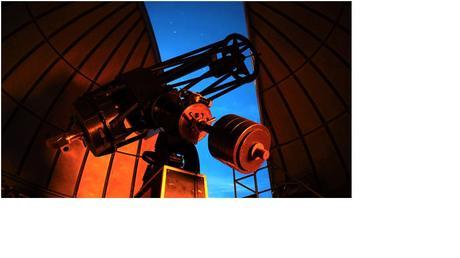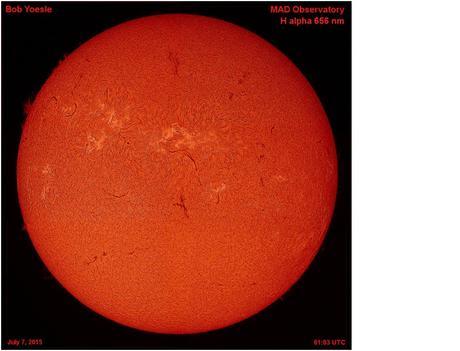
By some expert estimates, there are 70 billion trillion stars in the known universe – and, no, I do not know how many zeroes are involved in that number. There is, indeed, a reason why extremely large numbers are referred to as “astronomical.”
But only one of those countless stars is responsible for life on earth as we know it, for providing our planet with heat and light, allowing our food to grow and even generating our weather patterns. We owe our lives to our very own star, the sun. Might make sense to know more about it.
To that end many observatories – which normally cater to viewing nighttime luminaries like the moon, planets, galaxies and constellations – now also offer daytime solar viewing as well, along with a slew of trivia about our solar system’s main attraction.
One place to acquire an education about our sun is the Goldendale Observatory, outside Goldendale, Washington and about a two hour drive from Portland. Goldendale currently offers three daily sun shows – including a presentation plus viewing – five days a week. And it’s all free (after you pay for parking). This outing makes a perfect frugal, out-of-the-ordinary and immensely instructional day trip for Portlanders and tourists.
What to Expect
On a recent sunny day, my husband and I were among the solar students at Goldendale. We began our education in a darkened room with a 72 inch screen that revealed, in real time, what the sun looks like through the observatory’s specialized (and safely filtered!) H-Alpha Telescopes. This allowed everyone to see the surface of the sun while simultaneously learning more than we can really take in about this monstrous object (How monstrous you ask? More than one million earths would fit into the sun). We saw sun spots, plages, prominences and filaments and we discovered that the source of the sun’s power is thermonuclear fusion at its core – and that there’s enough fuel there for another five billion years (so, not to worry, folks!).
Troy Carpenter, the observatory’s administrator and the facilitator for our solar show, used a conversational Q & A approach, particularly suited to the youngsters in the audience – and to the adult show-offs. If you belong in the latter category, you’ll amaze your friends when you come up with the correct answers to these questions: Q: How long does it take for light from the sun to reach the earth? A: About 8 minutes. Q: What is the French word for beach? A: Plage (pronounced plawj). (I nailed this one!) A plage is a lighter colored – and hotter – area next to a sun spot. Q: What elements is the sun composed of? A: 79% hydrogen, 20% helium.
After our sun talk, we converged on the observatory itself for a chance to view a few other stellar sensations – stars that are otherwise invisible in the daylight – through Goldendale’s refurbished 24.5 inch telescope. We take turns climbing up the telescope’s ladder to see Betelgeuse (pronounced Beetlejuice!), 643 light years away and the much closer Sirius, about 8.6 light years from the earth. The nearest star to our sun – Alpha Centauri – is a mere 4.367 light years away. A light year, as you’ll recall from high school science class is the distance that light travels (186,000 miles PER SECOND) in a full year.
Stop for a second and try to get your cranium around these numbers. Imagining these distances – and the immensity of the universe – can make your head spin. And maybe that’s the point of all of this. While at Goldendale, we certainly learned a lot of interesting facts about the sun and its amenities. But the big takeaway was that we left awestruck and filled with wonder and something like reverence for the world we live in. Not a bad dividend for the cost of gas and parking.

If you go:
From April 1 through Sept. 30, there are three solar shows daily (at 2, 4 and 6 pm) except on Monday and Tuesday when the observatory is closed. You don’t need a reservation (unless you’ve got nine other friends with you). So just show up – on time or a bit early to ensure a seat on busy summer days – and check in at the desk. You’ll want to go on a sunny day (duh) or, at least, one with limited clouds. The shows are absolutely free but you must have a Discover Pass (a day permit is $10; available at the observatory). goldendaleobservatory.com; 1602 Observatory Drive, Goldendale, Wash.; 503-773-3141; check website for special events.

